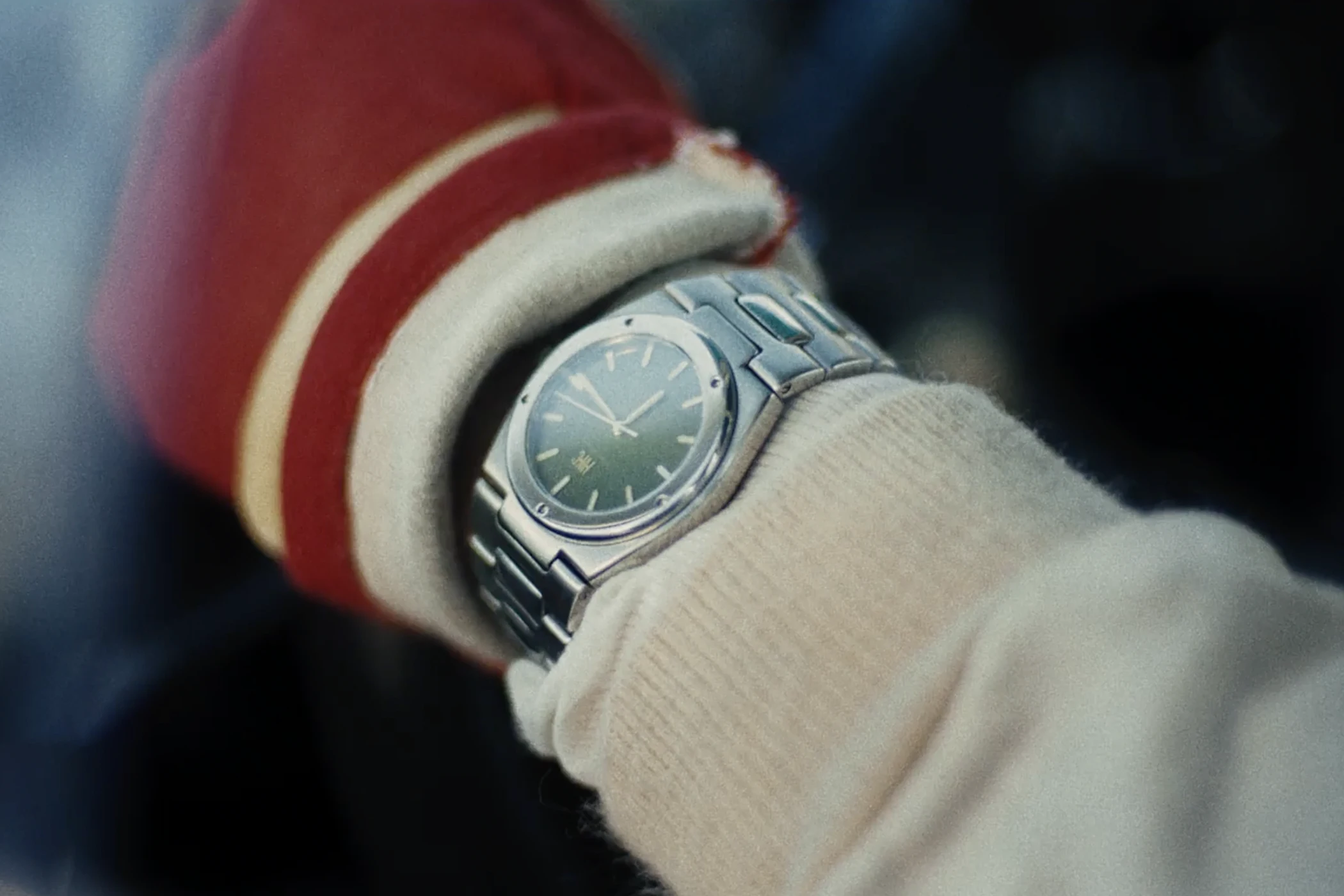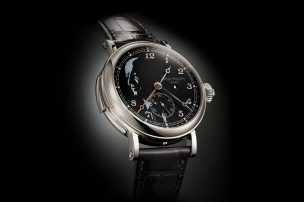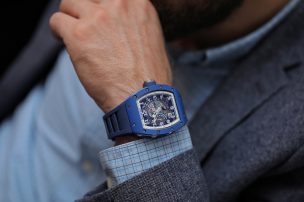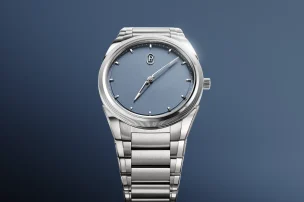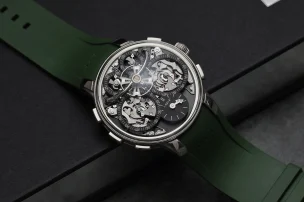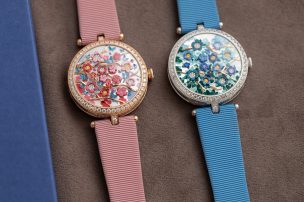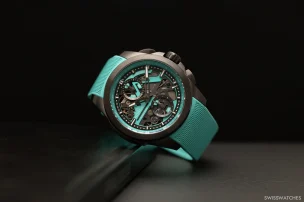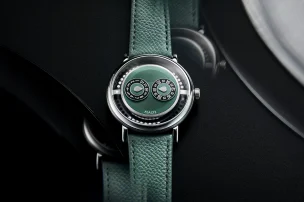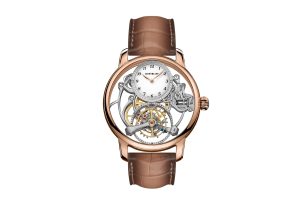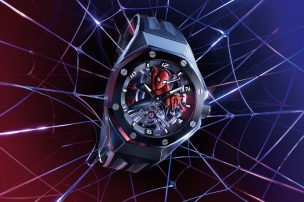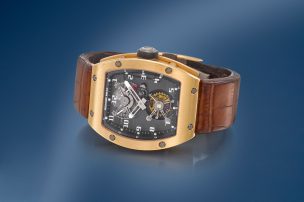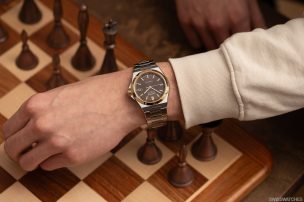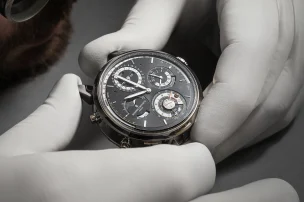
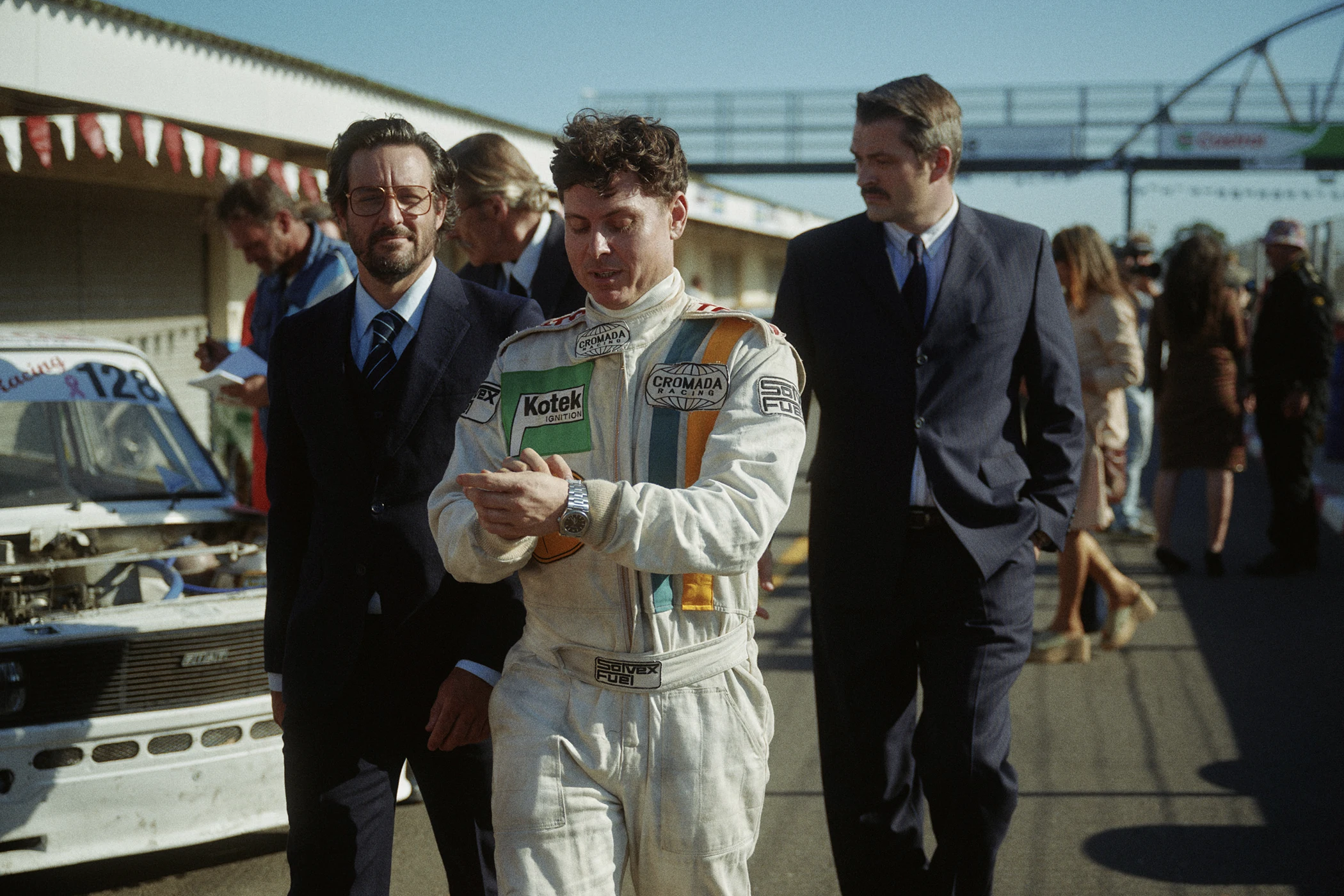
A New Short Film Reveals the Story Behind IWC’s Green Ingenieur SL
This year, the Ingenieur by IWC Schaffhausen became the subject of a veritable fireworks display of new models at Watches and Wonders 2025, expanding the Ingenieur collection with a diverse range of novelties. Five new models – whether in deep black ceramic, a perpetual calendar housed in stainless steel, or a full gold version – not only demonstrate how multifaceted Genta’s design can still be interpreted today, but also highlight the significance IWC continues to place on the Ingenieur within its product portfolio. This sentiment is also reflected in a promotional film in which IWC tells the story of the Ingenieur – weaving it into a fictional narrative centred around an Ingenieur with a green dial. It is precisely this green-dialled timepiece that builds the bridge to the model set to make its cinematic debut in the upcoming film F1: The Movie. This article explores the story behind the film and the green Ingenieur SL.
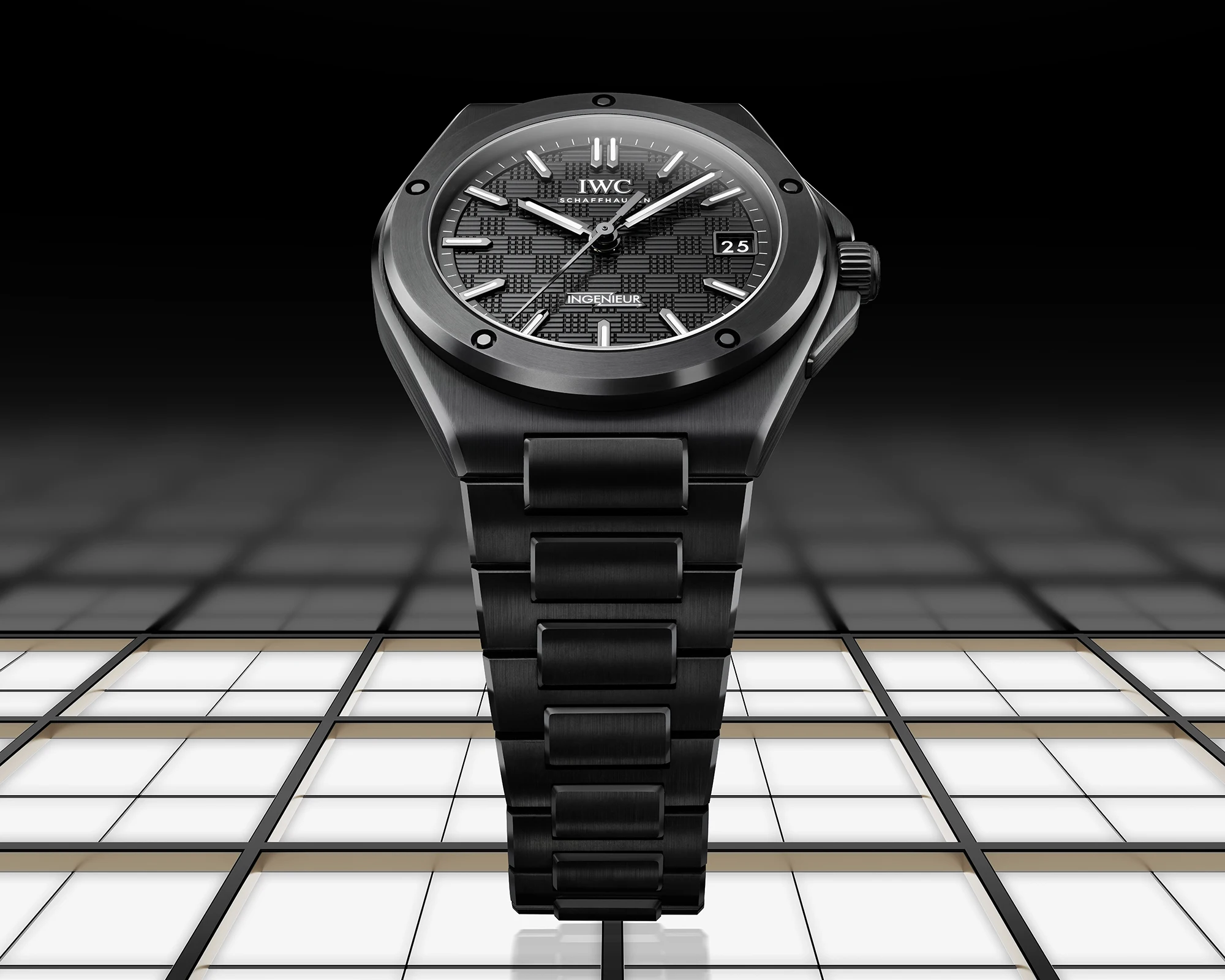
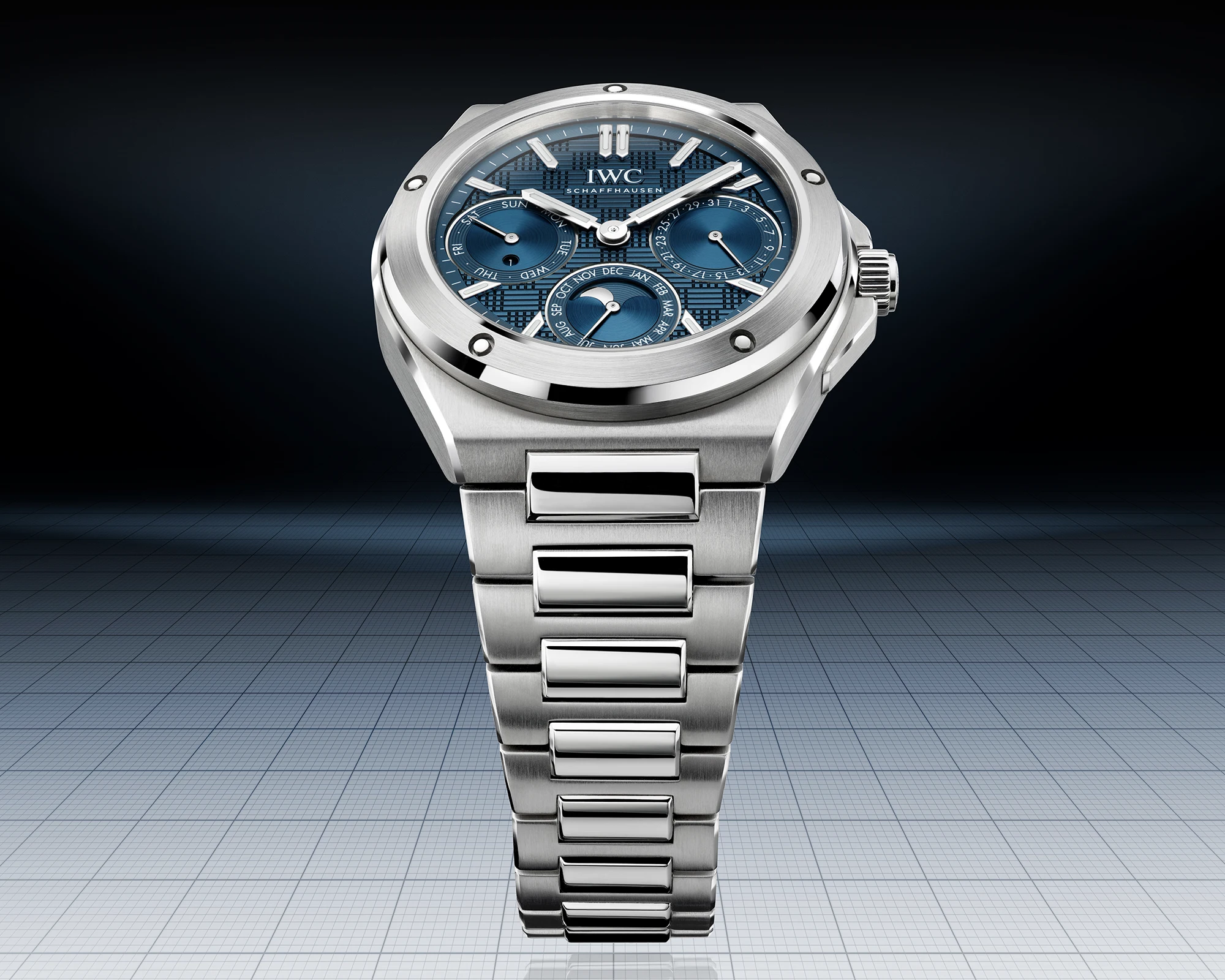
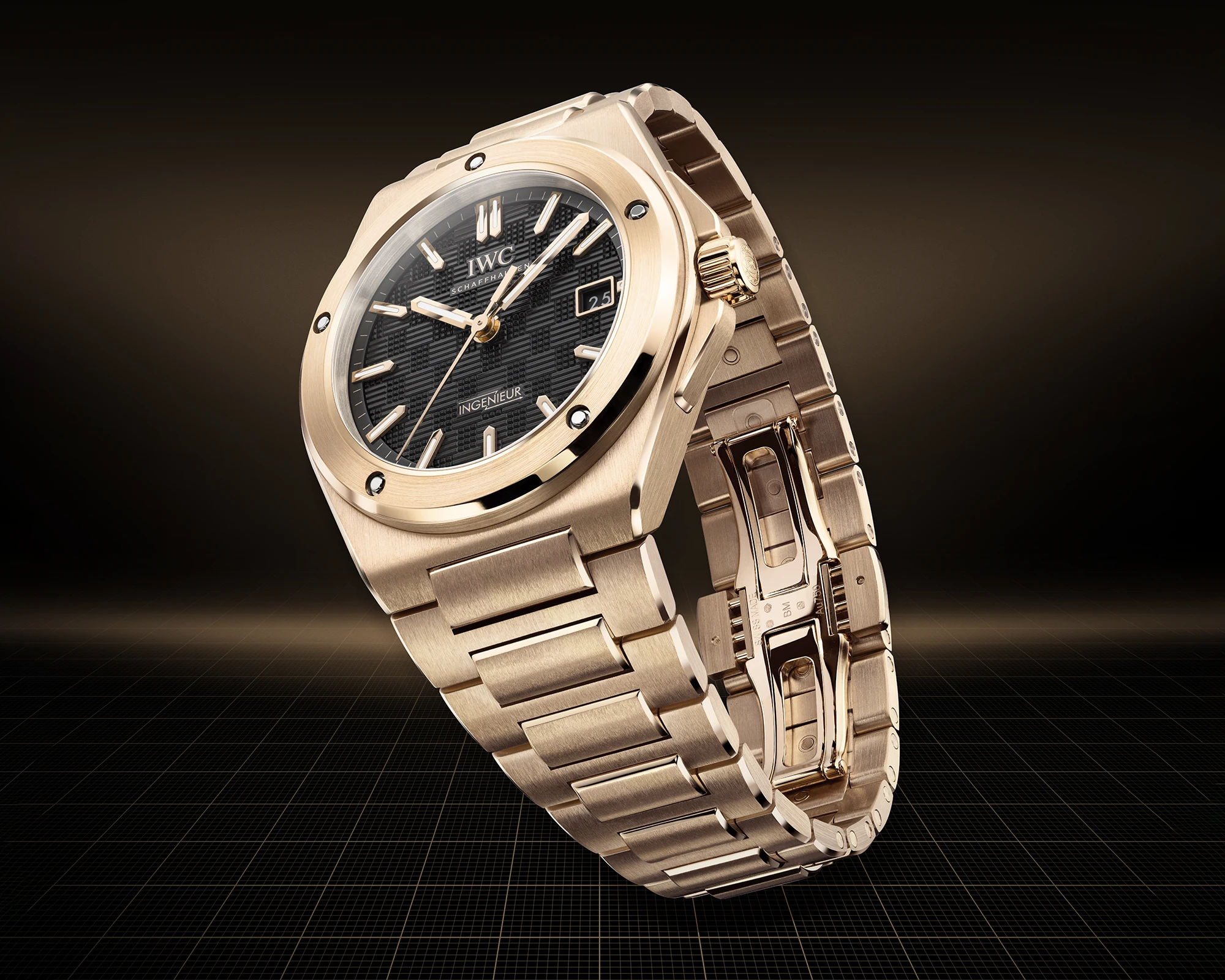
The Origin of the Ingenieur SL
The Ingenieur SL – officially “SL” stands for “Steel Line” – dates back to 1976, when IWC, amid the quartz crisis that had taken a firm grip on the industry, turned to designer Gérald Genta in the hope of benefiting from his creative prowess. The name was no coincidence: IWC already had models for divers and pilots in its range – but a watch specifically for engineers had been missing until then.
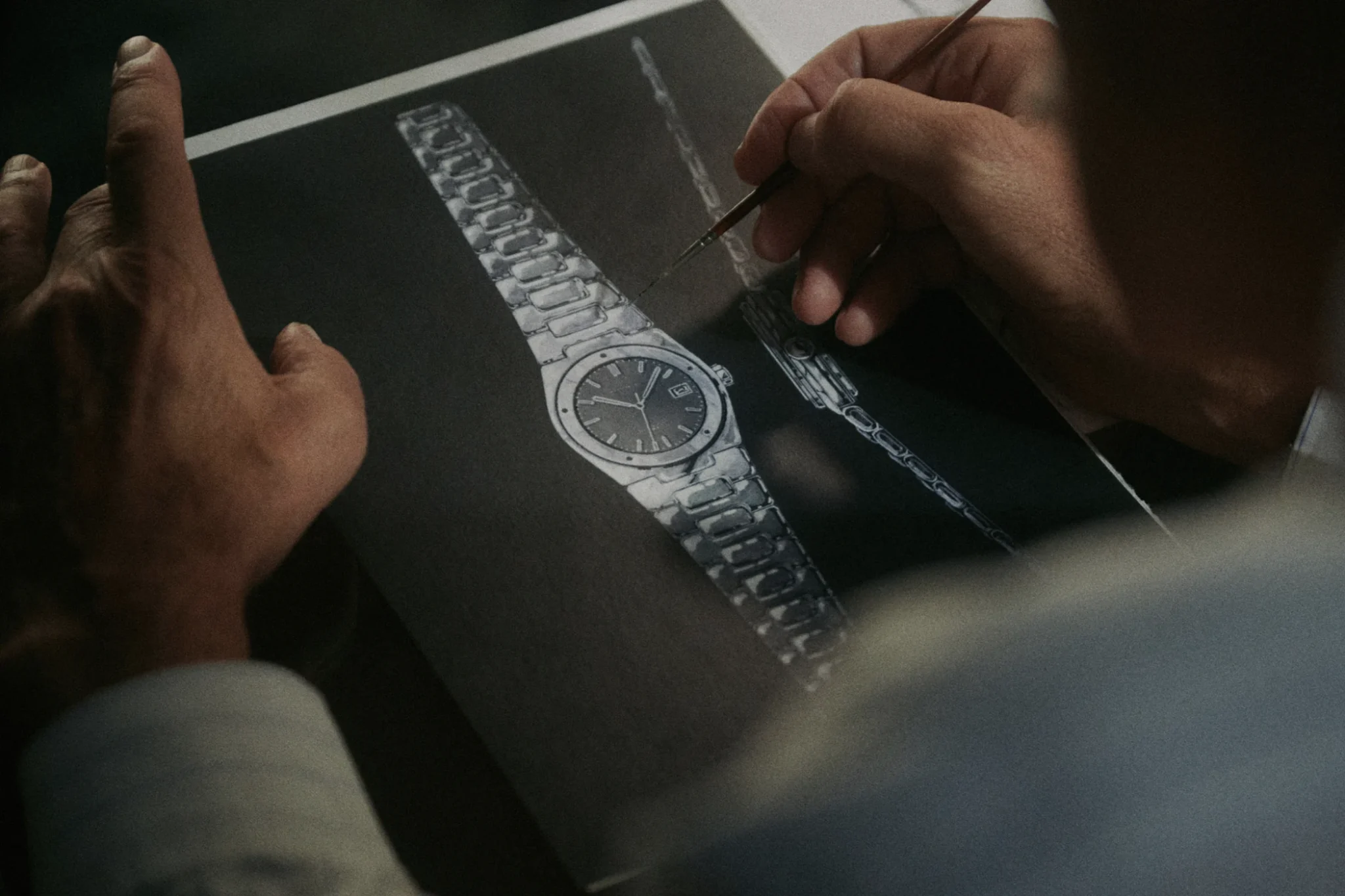
Genta, who had already made a name for himself with numerous iconic designs, equipped the Ingenieur SL with those unmistakable features that had laid the foundation for the concept of the “luxury sports watch” with integrated bracelet as early as 1972 with the Royal Oak. True to this design ethos – which would later continue with the Nautilus – the Ingenieur featured a cushion-shaped case in a three-part construction, complete with a screwed bezel and screwed caseback. A robust SL bracelet with rounded rectangular links was embedded into the case, flowing seamlessly into it and giving the watch a considerable heft – around 150 grams in stainless steel.

One of the most distinctive elements were the five recessed notches in the bezel, which were the result of the bezel being screwed into the mid-case. Since the required drill holes had to be individually made using a special tool for each watch, a certain level of irregularity and uniqueness was inherent to each piece.
Inside the Ingenieur ticked the calibre 8541ES, protected from magnetic fields by a soft iron inner case, which gave the Ingenieur its technical and anti-magnetic properties. A closer look at the calibre designation “ES” reveals more: the “E” denotes the use of non-magnetic materials for the lever, escape wheel and pallet fork, while the “S” refers to the movement’s hacking seconds function. Together, these components ensured that the movement could withstand magnetic fields of up to 1,000 gauss, and a rubber-mounted suspension further protected it against shocks.
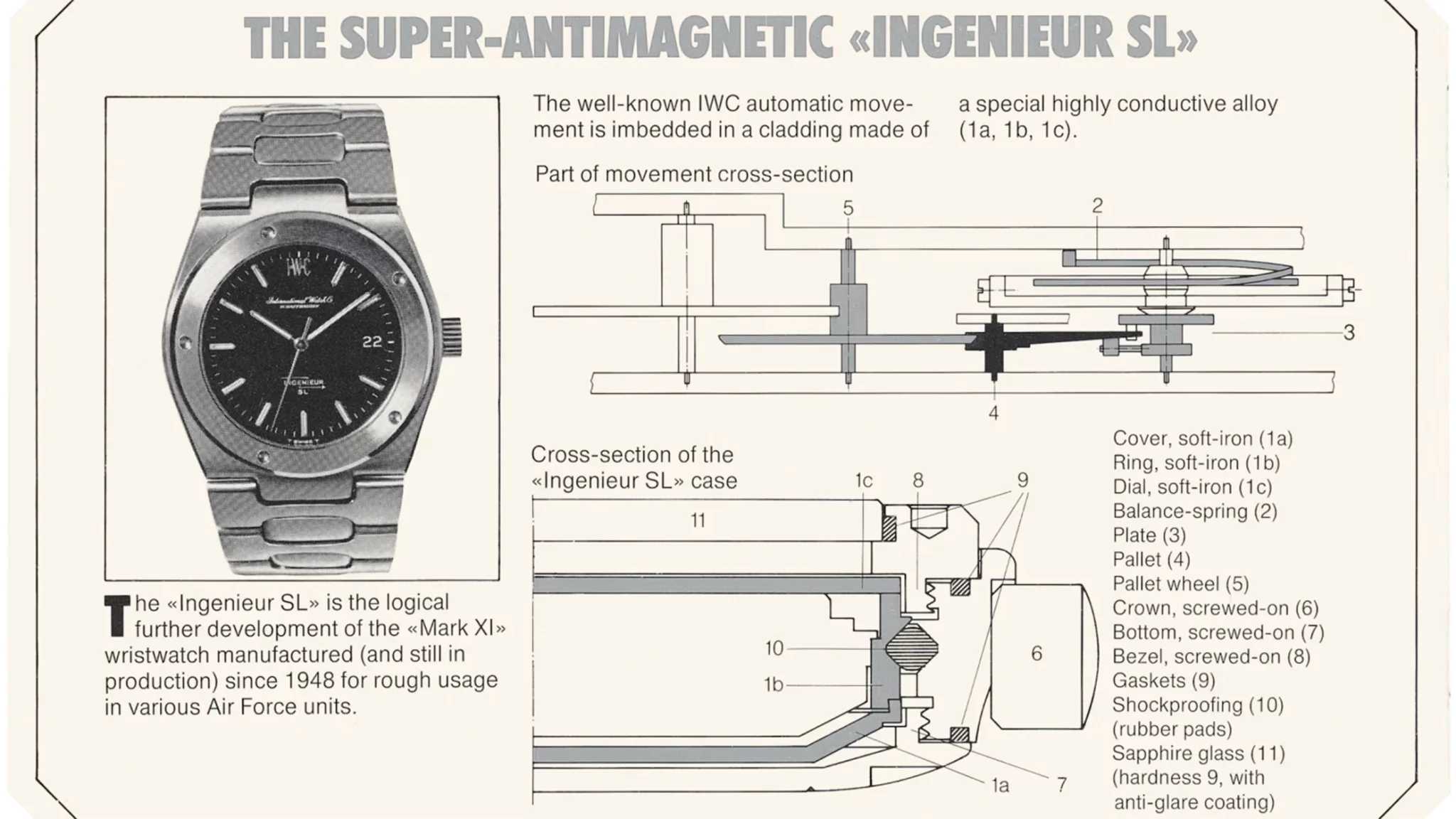
However, the hoped-for success did not materialise: the design was too bold for engineers, and collectors were not yet ready – only 598 pieces were produced and sold between 1976 and 1983.
“The Most Brilliant Failure” – How a Short Film Retells the Story of the Ingenieur SL
This is exactly where the film presented by IWC at this year’s Goodwood Members’ Meeting 2025 comes in. The film, ironically titled “The Most Brilliant Failure”, is set in the 1970s and recounts the story of the Ingenieur SL – enriched with a fictional narrative centred around a special model featuring a green dial.
The story begins in the early 1970s, when Gérald Genta designs the initial drafts for a new Ingenieur. In 1974, he travels to Schaffhausen to personally inspect the first prototype at IWC. After the technical tests prove successful, the watch is meant to be tested in everyday conditions – on the wrist of racing driver Rocco Del Sante. Convinced the watch brought him luck on the track, Del Sante expresses a wish for a version with a green dial.
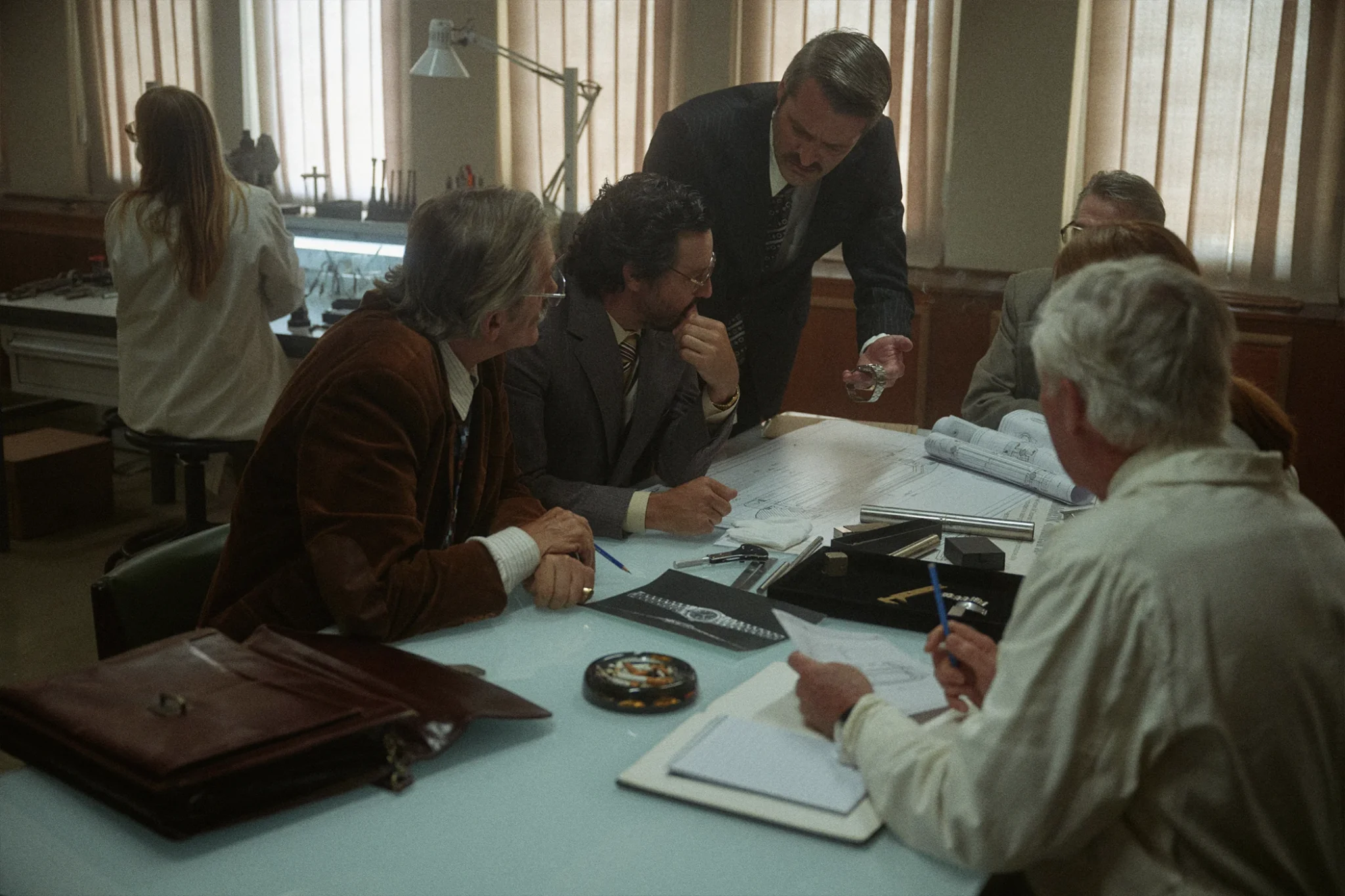
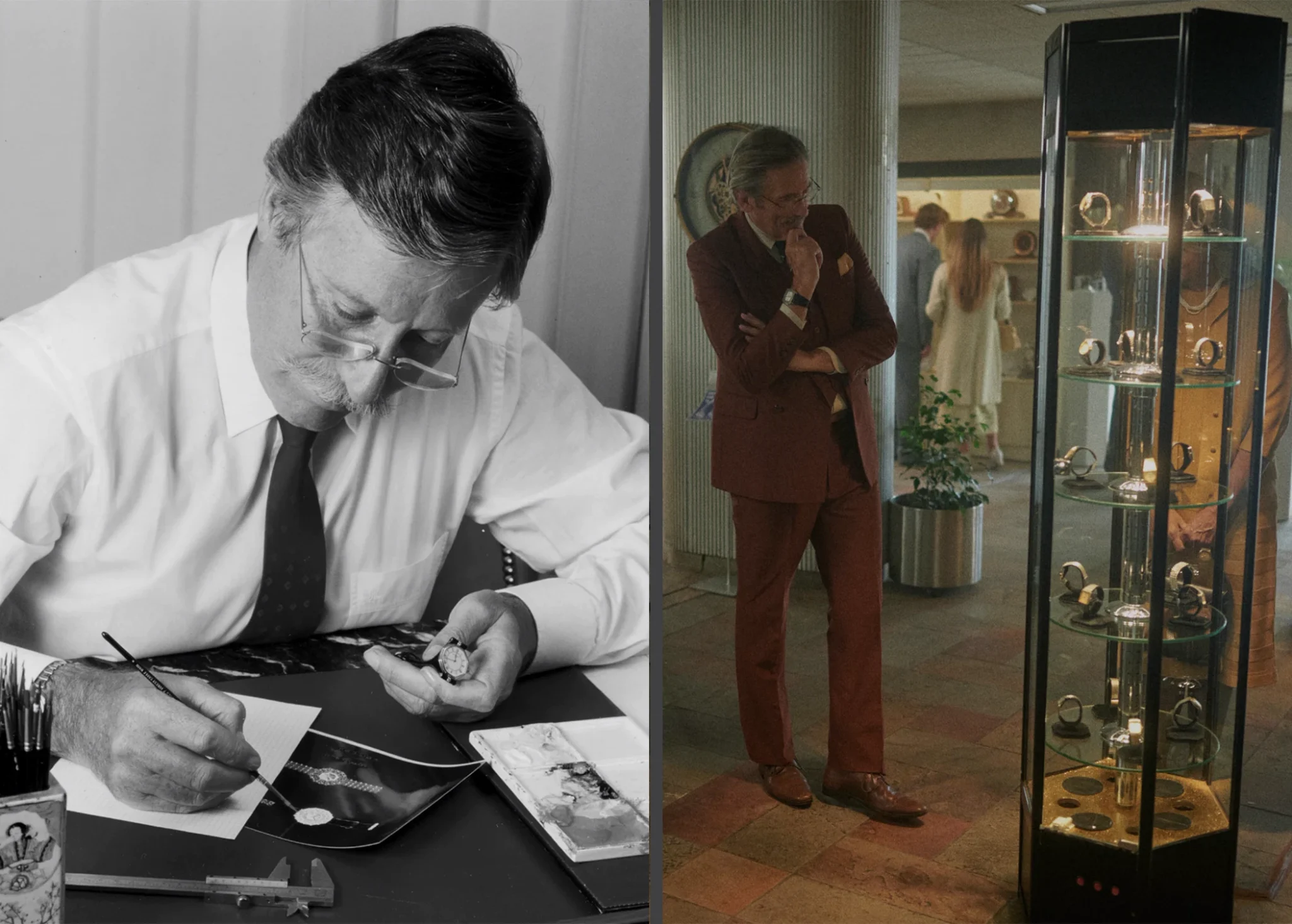
When IWC officially unveils the Ingenieur SL at the Basel watch fair in 1976, that wish initially goes unfulfilled. It is only two years later, in 1978, that Del Sante receives his personal version with a green dial. At the same time, sales director Hannes Pantli tries to market the Ingenieur to its intended audience – engineers. Yet the sales figures remain sobering: only 598 pieces of the Ingenieur SL are sold over a span of six years. What follows is the symbolic end of the line – visualised through Del Sante’s crash – and the Ingenieur collection is discontinued.
Nineteen years later, however, comes a turning point: the very watch with the green dial worn by Rocco Del Sante during his races finds its way back to his daughter through an auction. She purchases the timepiece and follows in her father’s footsteps. Others from the younger generation follow suit, discovering in the Ingenieur Reference 1832 the vision and greatness Genta had originally envisioned for his design.
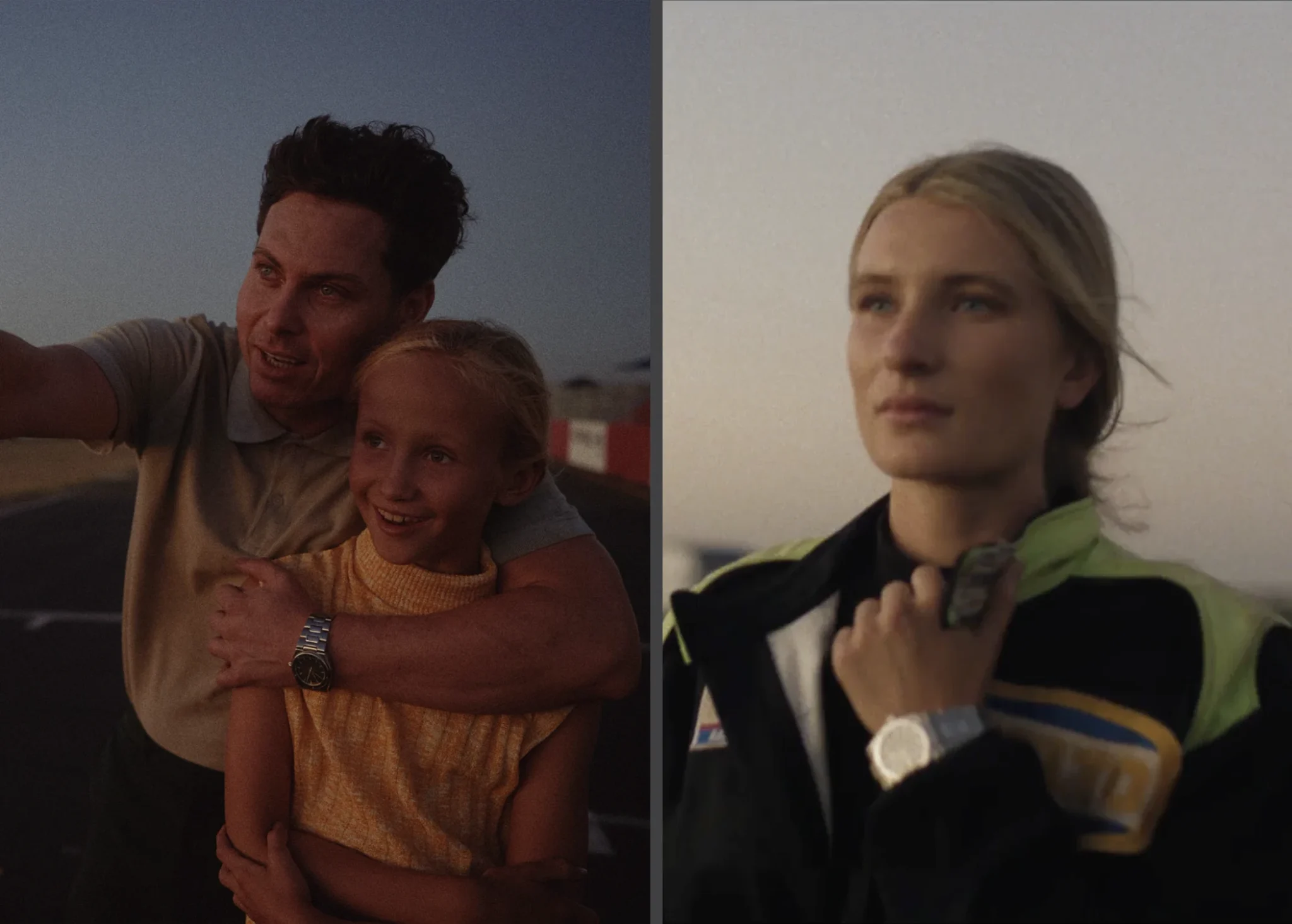
But is this truth or pure fiction? In a way, one might say: the first Reference 1832 was the right watch at the wrong time. Today, the model that once sold for the equivalent of around 1,200 euros fetches auction prices in excess of 20,000 euros – not least due to its limited production numbers.
A Special Prop
Naturally, IWC uses the prototype featured in the film to create a link to the green-dial model worn in the upcoming Apple Original film F1: The Movie, worn by none other than Brad Pitt – and serving as the inspiration for a 1,000-piece limited edition launched at this year’s Watches and Wonders.
F1: The Movie, set to hit cinemas worldwide in June 2025, tells the story of fictional Formula One driver Sonny Hayes, played by Brad Pitt, who returns to the pinnacle of motorsport after a long break – alongside a young teammate portrayed by British actor Damson Idris. Filming took place during real race weekends, with real F1 cars and on actual racetracks.
But the pursuit of authenticity didn’t stop with the racing experience – it extended to the watches worn by the actors. Brad Pitt sports a unique prop on his wrist: a reinterpretation of the historical Ingenieur SL Reference 1832, updated with a modern dial in fresh green. The piece was developed in collaboration with Brad Pitt, IWC and the design studio Cloister Watch Company.
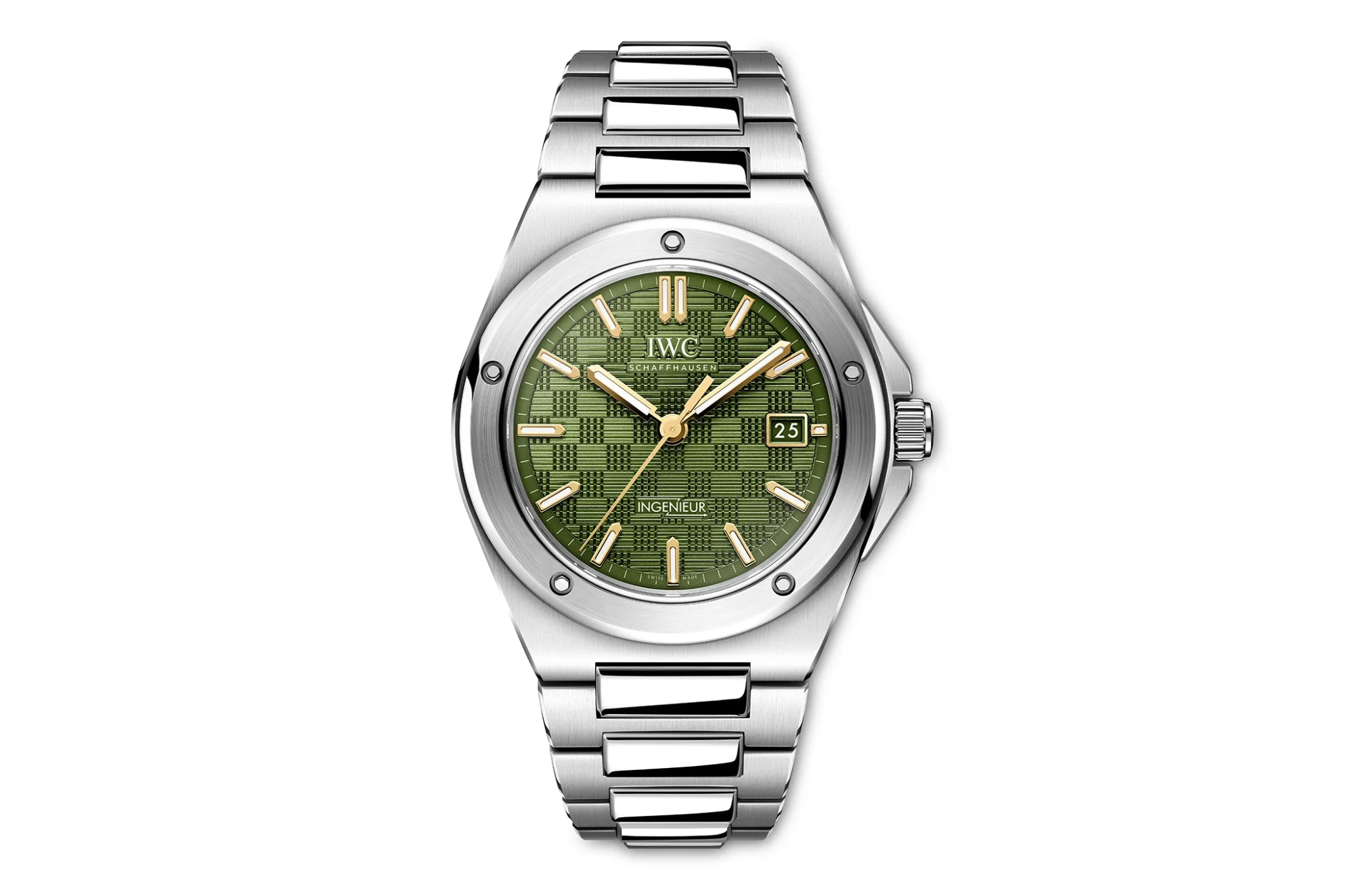
Based on its on-screen appearance, IWC launched a limited edition of 1,000 pieces at this year’s Watches and Wonders: Its 40-millimetre stainless steel case measures 10.8 millimetres in height and is water-resistant to 10 bar (100 metres). The true highlight, however, lies in the dial: it features the Ingenieur’s signature “grid” relief combined with a green colourway and gold-toned appliqués and hands coated with Super-LumiNova. Added to this are an integrated stainless steel bracelet with a butterfly folding clasp, as well as a screwed bezel with the Ingenieur’s five characteristic screws. Inside ticks the automatic in-house calibre 32111 with a power reserve of 120 hours – protected by a soft iron inner case, as has always been typical for the Ingenieur line.

